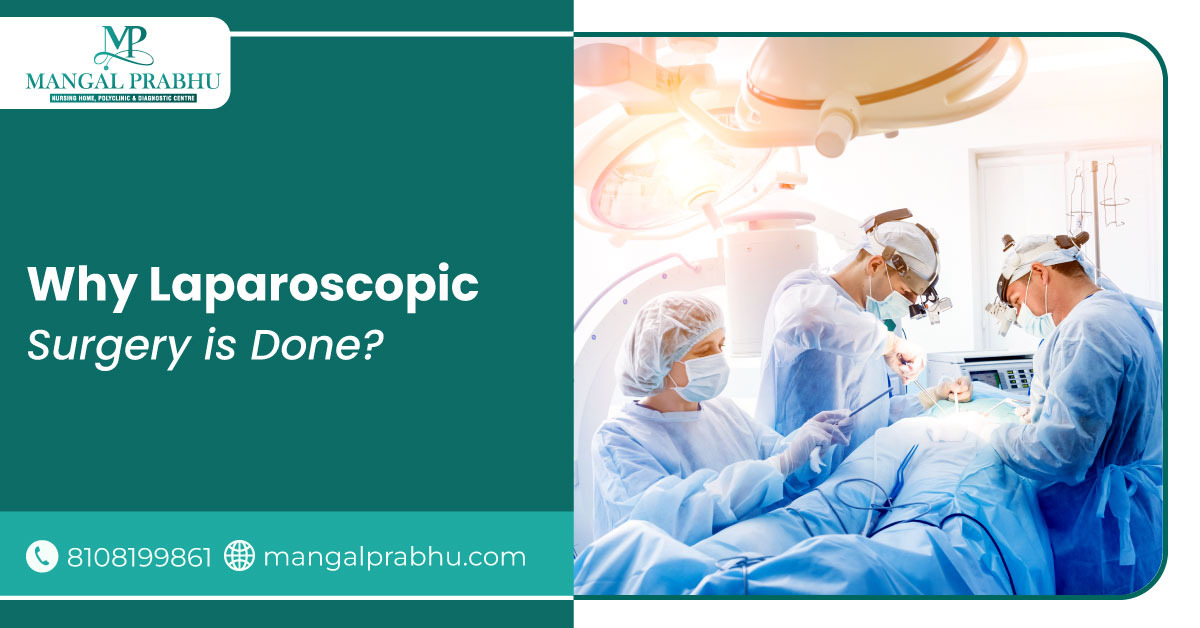
Why is Laparoscopic Surgery Done?
This minimally invasive surgery has emerged as a transformative approach in the realm of medical interventions. This innovative technique involves making small incisions through which a laparoscope, a tiny camera, is inserted to visualize and treat various conditions within the abdominal cavity. Mangal Prabhu Hospital is at the forefront of this groundbreaking practice, known for its excellence and a team of proficient Laparoscopic Surgeons in Navi Mumbai.
Reasons for Laparoscopic Surgery
i) Diagnosing Abdominal Pain
Laparoscopic surgery is often employed to identify the cause of unexplained abdominal pain. The laparoscope allows surgeons to explore the abdominal organs and tissues, facilitating a precise diagnosis.
ii) Removal of Cysts and Tumors
The minimally invasive nature of laparoscopic surgery makes it an ideal choice for removing cysts and tumors from various organs, including the ovaries and uterus. This approach minimizes trauma, accelerates recovery, and reduces scarring.
iii) Diagnosing and Treating Infertility
Laparoscopic surgery plays a crucial role in diagnosing and treating infertility issues. It enables the visualization of the reproductive organs, helping identify conditions such as endometriosis or blocked fallopian tubes that may contribute to infertility.
Preparation for Laparoscopic Surgery
Before undergoing Laparoscopic Surgery in Navi Mumbai, certain preparatory steps are essential to ensure a smooth and successful procedure.
a) Blood Tests
Comprehensive blood tests are conducted to assess the patient’s overall health, identify any underlying conditions, and ensure they are fit for surgery.
b) Imaging Tests
Various imaging tests, such as ultrasound or CT scans, may be performed to provide a detailed view of the abdominal area and aid in surgical planning.
c) Medications
Depending on the patient’s medical history and the nature of the surgery, medications may be prescribed to optimize the surgical process and enhance postoperative recovery.
Procedure of Laparoscopic Surgery
A) Anesthesia
Laparoscopic surgery is typically performed under general anesthesia to ensure the patient remains unconscious and pain-free throughout the procedure.
B) Insertion of the Laparoscope
Small incisions, usually less than an inch long, are made near the surgical site. The laparoscope is inserted through one of these incisions, providing a high-definition view of the internal organs on a monitor.
C) Making the Incision
Additional small incisions may be made to accommodate specialized instruments needed for the surgery. The surgeon carefully guides these instruments to perform the required procedures.
Recovery and Aftercare
1) Diet and Lifestyle Modifications
Following laparoscopic surgery, patients are advised on specific diet and lifestyle modifications to support healing. These recommendations may include dietary restrictions, activity levels, and postoperative care measures.
2) Follow-up Visits
Regular follow-up visits with the laparoscopic surgeon are crucial to monitor recovery, address any concerns, and ensure the patient’s overall well-being.
Conclusion
Laparoscopic surgery has revolutionized the landscape of surgical interventions, offering patients the benefits of reduced pain, quicker recovery, and minimized scarring. At Mangal Prabhu Hospital, a leading center for laparoscopic surgery in Navi Mumbai, the expertise of skilled surgeons combined with state-of-the-art facilities ensures that patients receive optimal care and the best possible outcomes. Choosing laparoscopic surgery at this hospital is not just a medical decision; it’s a commitment to personalized and advanced healthcare.
